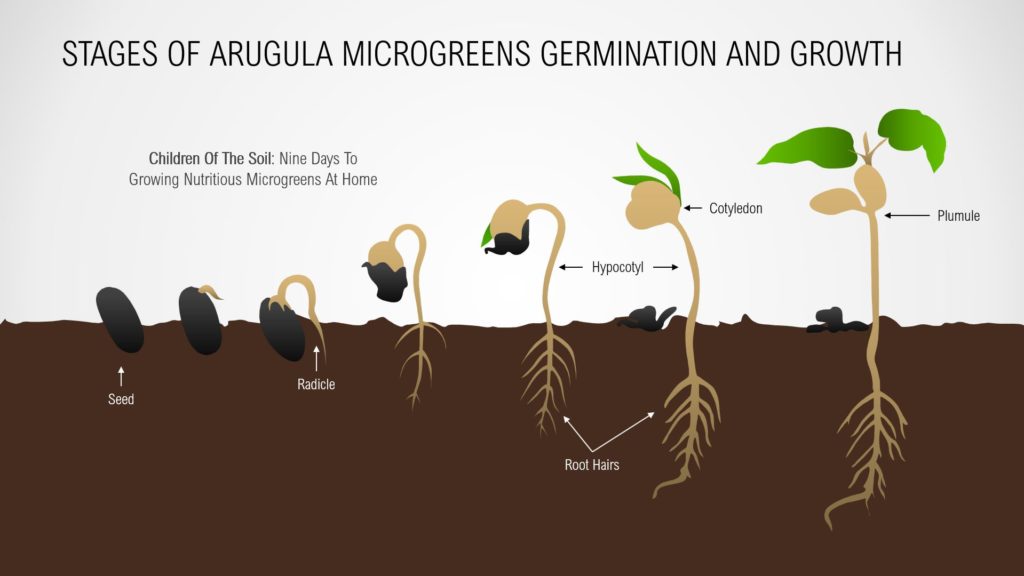Chapter Goal: Understanding why seeds need darkness, the five stages of germination, and how a plant grows from a seed.
The first few times I planted microgreens I thought little about it. I was following instructions from Stephen, my business partner. But three questions kept coming up in my mind each time.
- What is germination?
- Why do you put microgreens in the dark to germinate (blackout time)?
- How does a plant grow from a seed?
How Microgreens Grow
You have prepared the seedbed, sown the seeds, watered them, and placed them in a cool, dry, and dark location.

Now that the seeds are in place, and you have created the conditions necessary for its birth and growth, let’s look at what you can expect to happen over the course of the next 10 days.
The four stages of microgreens growth are:
- Germination
- Seedling Growth
- Main Shoot Growth
- Leaf Production
Each plant is different, but these basic processes plus the elements of light, water, and heat will bring each to life.
But what exactly happens in the dark?
Germination
Your microgreens seeds will go through five changes during the germination process:
- Imbibition
- Respiration
- Phytochrome
- Mobilization of Food Reserves
- Development of Embryo Axis into Seedling.
Imbibition
First, the dry seeds will absorb water from the soil. The seeds swell as they accumulate water and break their seed coat. This bursting allows the major root (radicle) to appear. Water begins the metabolic activity in the seed.
Respiration
Next, oxygen enters the seed. Life begins. This is the reason you don’t bury the seeds under the soil. Because they often cannot germinate because of inadequate oxygen. But then why are seeds blocked from germinating in the light?
Phytochrome
The answer is Phytochrome, a blue-green pigment in plants that sense low levels of light. We call seeds that respond to light for their germination photoblastic: positive photoblastic, negative photoblastic, and non-photoblastic. In positive photoblastic seeds like arugula, the red region of the visible light spectrum is most effective for germination.
| Phytochrome |
| “Recent advances have also suggested that phytochromes also act as temperature sensors, as warmer temperatures enhance their de-activation.” – Wikipedia |
The far-red region (the region immediately after the visible red region) reverses the effect of red light and keeps the seed dormant. There are two important forms of phytochrome (Phytochrome A and Phytochrome B) Phytochrome A promotes germination until exposed to light.
And phytochrome B inhibits and slows germination when exposed to exceptionally low levels of light in the red/far-red spectrum. When the seed is in pitch-black darkness, the Phytochrome B becomes active and activates germination.

